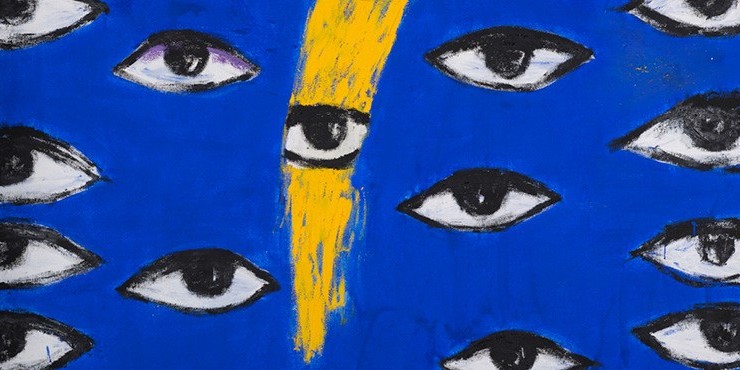
The sum of Ján Hlavatý’s painting efforts over three decades is proof of the internal stability of his painting convictions; it is also proof of the need to sensibly react to the transformations and function of visual artistry.
Beginning in the 1980s, he was part of the “rebellious” generation which resisted existing paradigms and reacted to incoming signals of Post-modernist painting. Hlavatý was very close to new expressiveness in painting which was based on the traditions of various types of Expressionist painting and abstract Expressionism. From the very beginning, he concentrated on developing a dramatic program figuratively based on his artistic concept. However, the figure was only an assumed background which emphasized the dramatization of color and the compositional elements of the painting. Therefore, Hlavatý primarily dealt with an evaluation of artistic qualities of painting without concretizing the context even in the continuity of the development of the painting itself. He later developed an entire range of possibilities for working with color based on relations within the given space designated by combinations of patches, by elaborating color accords, swift gestural brushwork, and the contrast of linear and gestural calligraphic strokes by sand structuring. This form of the nature of Hlavatý’s painting was considered to be an attribute of new abstraction. It was not only a formal development, but a correlation and overlap of several areas of meaning and style (landscape, architecture, figure). Various “thematic” shots in internal introspection and meditations through a return to figure, landscape and symbolism have recently appeared in his work. His painting preserves the first impression of abstractness, however its new thematizing expresses the need to raise the significance of the status of artwork in the current transformations of the function of visual artistry.
Eva Trojanová
